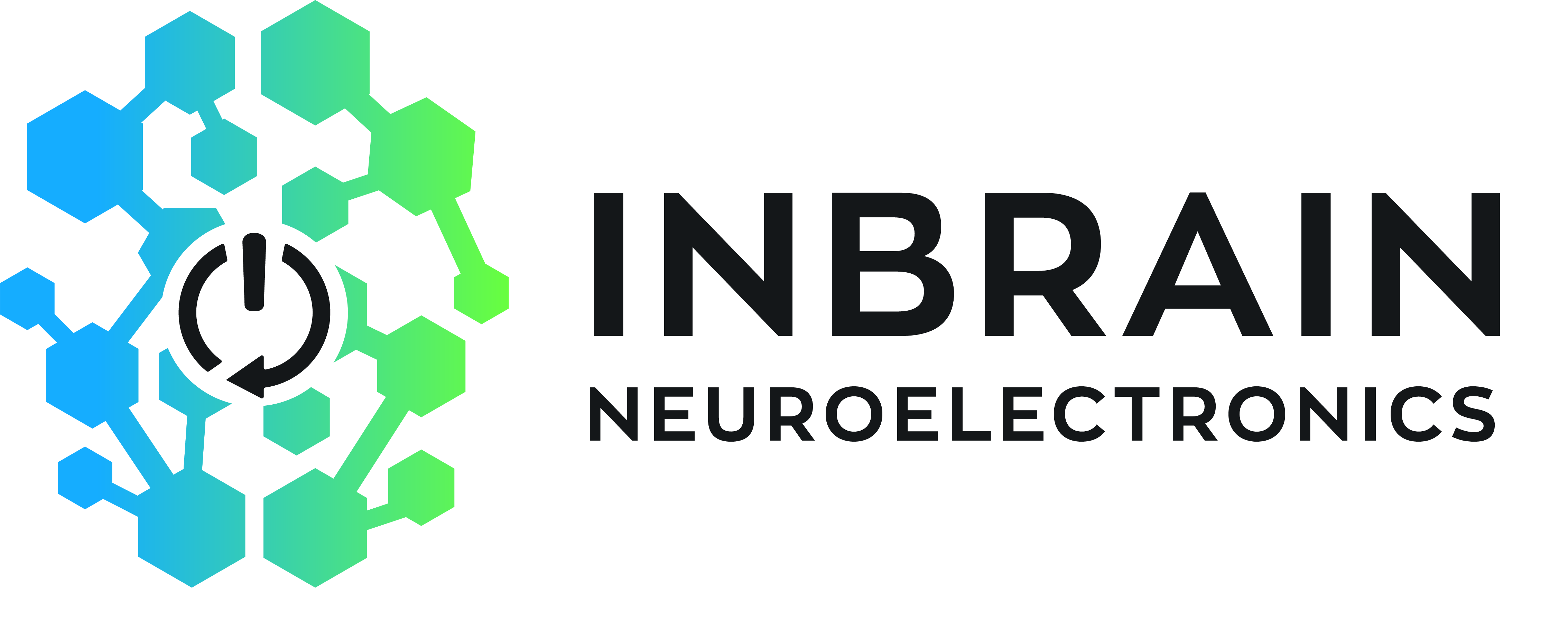33
| ICREA | Patents | ||
|---|---|---|---|
|
EXPERIMENTAL SCIENCES & MATHEMATICS |
|||
| Sebastian Grinstein (IFAE) |
|
||
| Paolo Melchiorre (ICIQ) |
|
||
| ENGINEERING SCIENCES | |||
| José Antonio Garrido (ICN2) |
|
||
| Josep Nogués (ICN2) |
|
||
| Valerio Pruneri (ICFO) |
|
||
| Jelena Radjenović (ICRA) |
|
||
| Neus Sabaté (IMB-CNM) |
|
||
| Samuel Sánchez-Ordónez (IBEC) |
|
||
| Jordi Sort (UAB) |
|
||
| Kestutis Staliunas (UPC) |
|
||
| LIFE & MEDICAL SCIENCES | |||
| Joaquín Arribas (PSMAR & VHIO) |
|
||
| Pia Cosma (CRG) |
|
||
| Xavier Daura (UAB) |
|
||
| Manel Esteller (IJC) |
|
||
| Núria López Bigas (IRB Barcelona) |
|
||
| Pablo Menéndez (IJC) |
|
||
| Núria Montserrat (IBEC) |
|
||
| Ángel R. Nebreda (IRB Barcelona) |
|
||
| Luis Serrano (CRG) |
|
||
| Manuel Serrano (IRB Barcelona) |
|
||
| Hans Supèr (UB) |
|
Science to Society – ERC Proof of Concept grants
6
Paolo Melchiorre | Light-COAT - Visible Light-Activated Photoinitiators for Applications in Domestic Coatings
Light-COAT – Visible Light-Activated Photoinitiators for Applications in Domestic Coatings
The use of light to trigger and control radical polymerisation is a powerful strategy for rational polymer synthesis and advanced materials. Photoinitiated polymerisation is today widely used in industry for several applications. Essential for the continued progress of the field is the discoveries of novel photoinitiators endowed with tailored properties, such as high activity at ambient temperature and the possibility to use visible light instead of UV irradiation to produce radicals in high quantum yields. Using visible light is essential for domestic applications, as there would be no hazards related to exposure to UV light. Light-COAT aims at preparing new visible-light-activated photoinitiators and evaluate their potential for the formulation of domestic coating compositions. As part of the ERC-2015-CoG project CATA-LUX (681840), focused on developing photochemical synthetic methodologies, we recently identified a family of visible-light-absorbing organic compounds with high potential to act as photoinitiators for polymer applications. These photoinitiators can be easily synthesised, are activated by weak light, including solar light or simple light-emitting-diodes, provide access to colourless polymeric materials, and have shown potential for applications in domestic indoor/outdoor coatings. These unique features make this novel family of photoinitiators suitable to enhance convenience in use (reduced drying time and improved weatherproof feature), offering a strong opportunity to improve domestic coating formulations.
Paolo Melchiorre – Institut Català d’Investigació Quimica (ICIQ)
ERC – PoC2019
Pablo Menéndez | IT4-TALL - Clinical translation of a novel CD1a-directed CAR for relapse/refractory cortical T-cell Acute Lymphoblastic Leukemia: feasibility, efficacy and safety
IT4-TALL – Clinical translation of a novel CD1a-directed CAR for relapse/refractory cortical T-cell Acute Lymphoblastic Leukemia: feasibility, efficacy and safety
Immunotherapy has revolutionized cancer treatment over the last decade. Adoptive cell immunotherapy with T-cells genetically redirected to a tumor-specific antigen using a chimeric antigen receptor (CAR) has achieved impressive response rates in advanced B-cell acute lymphoblastic leukemia (B-ALL). CAR T-cell strategies beyond B-cell tumors are, however, hampered by expected toxicities, owing to the lack of bona fide therapeutic and safe antigens. Indeed, there are no immunotherapeutic therapies (including CAR T-cells) approved for T-cell malignancies (T-ALL or T-cell lymphomas), as the shared expression of target antigens between CAR T-cells and T-blasts induces CAR T-cell fratricide and T-cell aplasia, leading to fatal immunodeficiency. We recently identified the CD1a antigen as a safe target for CD1a+ cortical T-ALL (coT-ALL), a major subgroup of T-ALL, and we have developed a novel CD1a-specific CAR. Results generated from my previous ERC-funded work (INFANTLEUKEMIA nº646903 and IT4-BALL nº811220) have just been protected by a European Patent (EP19382104.8; CARTs for the treatment of CD1a+ cancer). Our intellectual property rights coupled to our internationally-endorsed top-tier scientific publication are a major strength of our proof-of-principle demonstration that CD1a-directed CAR T-cells constitute a unique immunotherapy approach for coT-ALL. We propose to consolidate final technical-biological improvements and GMP-grade manufacturing of our CD1a-directed CAR T-cells in compliance with the requirements of the Spanish Regulatory Agency of Medicines and Medical Devices for advanced adoptive cellular therapies (AEMPS). Data from this project will be added to the final Investigational Medicinal Product Dossier (IMPD) of the CARCD1a T-cells to be submitted to AEMPS for regulatory approval to launch a pan-European open Phase Ib clinical trial for relapse/refractory coT-ALL in early 2022, ensuring social and health value of this innovative immunotherapy.
Pablo Menéndez – Institut de Recerca contra la Leucèmia Josep Carreras (IJC)
ERC – PoC2020
Natasa Przulj | GENETTA - Genomic Data-Fusion Platform for Omics-Driven Precision Medicine
Natasa Przulj – Barcelona Supercomputing Centre – Centro Nacional de Supercomputación (BSC – CNC))
ERC – PoC2020
Victoria Reyes García | ICCION - Indigenous Climate Change Impacts Observation Network
Victoria Reyes García – Universitat Autònoma de Barcelona (UAB)
ERC – PoC2019
Manuel Serrano | SENFIB-Novel senolytic drugs for the treatment of lung and kidney fibrosis
Manuel Serrano – Institut de Recerca Biomèdica (IRB Barcelona)
ERC – PoC2020
Sergio Valenzuela | SOTMEM-Topological Insulator-Based Spin Orbit Torque MEMories
Sergio Valenzuela – Institut Català de Nanociència i Nan0tecnologia (ICN2)
ERC – PoC2019
11
Eduard Batlle | CRC-MTOs - Colorectal Cancer Mouse Tumor Organoids as Pre-clinical Models for Therapeautical Testing
CRC-MTOs – Colorectal Cancer Mouse Tumor Organoids as Pre-clinical Models for Therapeautical Testing
Colorectal cancer (CRC) is one of the leading causes of death by cancer, which is closely connected to the spread of the disease in the body. Among the most promising therapeutic strategies to treat late stage cancers are immunotherapies. But only 5% of such advanced patients respond to immunotherapies. Progress to understand to what extent patients with metastatic CRC may benefit from immunotherapy has so far been limited by the lack of preclinical model systems to study late stage CRC under fully immunocompetent conditions.
This project aims to generate a unique pre-clinical model of advanced colorectal cancer (CRC) based on mouse tumour organoids (MTOs) to use for therapeutic testing of oncology products. Prof. Batlle’s newly generated MTOs will provide unique tools ready to be licenced and exploited in strategic public-private collaborations, with the ultimate goal to aid in the development of new drugs to treat advanced CRC sufferers. The research that his team, based at IRB Barcelona, will develop under the ERC’s PoC scheme will leverage the know-how he obtained during his previous ERC Advanced Grant: this involved the use of genome editing tools to modify organoids. This is Prof. Batlle’s second PoC grant, the first was to develop a test to predict the risk of CRC relapse.
Eduard Batlle – Institut de Recerca Biomèdica (IRB Barcelona)
ERC-PoC2018
Jens Biegert | miniX - MINIaturitzed coherent soft X-ray source for research and industry
miniX – MINIaturitzed coherent soft X-ray source for research and industry
X-rays are a prime analytical tool across a diverse range of areas in our modern economy—from fundamental physics and chemistry research, to the pharmaceutical and semiconductor industries. In particular, sources of ultrafast coherent x-rays are expected to have a transformative impact in all of these areas due to their capacity to enable the study of interactions between charge carriers and atoms in gases, liquids and solids, in real-time, and with element specificity. Ease of use, compactness and price will prove vital for any new X-ray technology looking to find use in industrial applications. “miniX” will address all of these issues with the miniaturization of a laser-based soft x-ray source, designed for lay user operation and at low cost.
Jens Biegert – Institut de Ciències Fotòniques (ICFO)
ERC – PoC2018
Gerasimos Konstantatos | SPECTRODOT - Hand-held broadband hybrid graphene-quantum dots spectrometer
SPECTRODOT – Hand-held broadband hybrid graphene-quantum dots spectrometer
Optical Spectrometry is a powerful non-destructive, high throughput technique used extensively for threat and hazardous substance detection, food inspection, process and environmental monitoring and quality control amongst others. The market is fragmented into many niche markets, mainly due to the different wavelengths ranges of interest. Hybrid graphene-quantum dot photodetectors can enable versatile spectrometer covering the whole spectral range from UV to mid-IR. The main goal of SPECTRODOT is to develop a prototype low-cost, hand-held spectrometer with broadband range from 400 to 2500 nanometres.
Gerasimos Konstantatos – Institut de Ciències Fotòniques (ICFO)
ERC – PoC2018
Daniel Maspoch | Hybead - Hybrid Bead Adsorbents
Hybead – Hybrid Bead Adsorbents
Each year, millions of people, most of them children, die from diseases associated with inadequate water supply, sanitation and hygiene. In particular, exposure to heavy metals in drinking water, even at trace levels, poses a considerable health risk. As included in one of the seventeen sustainable development goals of the United Nations, “safe water and adequate sanitation are indispensable for healthy ecosystems, reducing poverty, and achieving inclusive growth, social well-being and sustainable livelihoods”. In this PoC project, named Hybrid Bead Adsorbents (Hybead), we aim to evaluate the feasibility of advancing Hybrid Inorganic Nanoparticle/Metal-Organic Frameworks Bead-type adsorbents into the pre-commercial stage, with the aim of accelerating their access to the market as an efficient technology for removing heavy metal ions from water. The first part of Hybead encompasses scaling-up of our current spray-drying synthesis of these beads from the gram-scale to economically viable kilogram-scale production. We will also shape the composite beads for proving its use into existing water purification technologies. This will entail shaping Hybead into granules and integrating them as fillers into polymer matrices to produce membranes by common industrial-scale methods (e.g. compaction and solvent casting). The second part of Hybead will be dedicated to intellectual property (IP) and market aspects needed for the pre-commercialization of this new technology for water purification. This study will include a patentability study, a freedom-to-operate (FTO) analysis and a market study to identify the filter producers that could ultimately serve as manufacturing partners. In this project we will endeavor to assess the commercial viability of with Hybead adsorbents, accelerate their market entry and ultimately, explore the possibility of launching a spin-off to manufacture and commercialize viable products.
Daniel Maspoch – Institut Català de Nanociència i Nanotecnologia (ICN2)
ERC – PoC2019
Pablo Menéndez | IT4B-ALL - Therapeutic immunotherapy targeting NG2 and CD22 antigens for MLL-rearranged and MLL-germline B-cell Acute Lymphoblastic Leukemia
IT4B-ALL – Therapeutic immunotherapy targeting NG2 and CD22 antigens for MLL-rearranged and MLL-germline B-cell Acute Lymphoblastic Leukemia
B-ALL is the commonest cancer of childhood. There remain childhood B-ALL subgroups with dismal prognosis such as infant B-ALL and B-ALL carrying MLL rearrangements (MLLr). In addition, the prognosis of adult B-ALL is worse, and refractory/relapse (R/R) B-ALL remains dismal. CD19-targeted immunotherapies have emerged as promising therapeutic approaches for R/R B-ALL. CD19 CAR T-cells have shown impressive efficacy in R/R B-ALL. However, relatively rapid relapses are frequently observed, a proportion of them losing CD19 expression upon CAR19 T-cell therapy due to massive antigen pressure over CD19, resulting in a myeloid lineage switch in MLLr B-ALL, or the selection of CD19-/CD34+ preleukemic progenitors. Further CD19-targeted therapy is thus ineffectual for CD19neg R/R B-ALL. Our overarching goal is to provide novel therapeutic options for (R/R) B-ALL.Targeting surface antigens whose expression, opposite to CD19, are commonly retained at relapse is a valid strategy to circumvent the loss of CD19 found in (R/R) B-ALL after CD19-targeted therapies. Recent work funded by my ERC-2014-CoG has identified NG2 and CD22 as key antigens to be targeted in (R/R) B-ALL. First, both antigens are retained in CD19neg R/R B-ALL. Second, NG2 is solely expressed in MLLr B-ALL, and is associated with CNS infiltration, aggressiveness and glucocorticoid resistance. Third, CD22 is a pan-B marker expressed developmentally earlier than CD19, and CD34+CD22+CD19- cells may represent pre-malignant progenitors escaping the CD19-targeted pressure. These results have just been protected by a European Patent (EPI173825514), and are the proof-of-principle demonstration of NG2 & CD22 representing promising immunotherapeutic targets, when combined with CD19 for both MLLr & MLL-germline B-ALL, respectively. Here we propose to consolidate preclinical work and GMP production of anti-NG2 monoclonal antibody and NG2/CD19 and CD22/CD19 CAR T-cells to launch a PhaseI academic clinical trial for R/R B-ALL.
Pablo Menéndez – Institut Josep Carreras (IJC)
ERC – PoC2018
Ángel R. Nebreda | p38_InTh - Innovative therapeutic tools to ameliorate chemotherapy-induced cardiotoxicity
p38_InTh – Innovative therapeutic tools to ameliorate chemotherapy-induced cardiotoxicity
p38_InTh aims at improving the potency of a new class of highly specific p38 pathway inhibitors and validate their potential therapeutic use to ameliorate chemotherapy-induced cardiotoxicity without affecting the cancer cell toxicity of the chemotherapeutic. Chemotherapeutics used for cancer treatments have serious side effects, both the most broad-spectrum ones (such as anthracyclines) and the directed ones (such as trastuzumab). In particular, the cardiotoxicity is a major issue associated to chemotherapy. Cardiooncology research has recently emerged to tackle this serious unmet medical need. The cardiotoxicity induced by chemotherapeutics includes from arrhythmia to heart failure. To mitigate it, cardiooncologists usually adjust the treatment with reduced doses for a longer period, but this makes the anticancer treatments less efficient and consequently reduces the quality of life of the patients. There is evidence that cardiomyocyte death induced by anthracyclines involves activation of a specific p38 pathway, suggesting that inhibition of this pathway may reduce the cardiotoxicity associated with chemotherapeutics. Over the last two decades, many p38 pathway inhibitors have been developed by industry. However, these are mostly ATP competitors and have shown disappointing results in clinical trials. In contrast, we have recently identified novel compounds that inhibit only one of the target isoforms and through a novel MoA, selectively antagonizing the activation of this isoform by one of its protein partners. We propose to improve the potency of these hits and validate their potential therapeutic use to ameliorate chemotherapy-induced cardiotoxicity without affecting the cancer cell toxicity. Importantly, our new drug would inhibit only a subset of the p38 pathway regulated functions, which is expected to result in increased specificity, thereby overcoming the undesired side-effects found in clinical trials for the classical ATP competitive p38 pathway inhibitors.
Ángel R. Nebreda – Institut de Recerca Biomèdica (IRB Barcelona)
ERC – PoC2018
Neus Sabaté | POWER-PATCH - Self-Powered Skin Patch for Cystic Fibrosis Diagnosis
Neus Sabaté – Institute of Microelectronics of Barcelona – Centre Nacional de Microelectónica (CSIC – IMB-CNM)
ERC – PoC2019
Samuel Sánchez Ordóñez | LABPATCH - Lab-in-a-patch for PKU self-assessment
LABPATCH – Lab-in-a-patch for PKU self-assessment
Phenilketonuria (PKU) is a congenital metabolic disease related to high levels of phenylalanine (Phe) in blood that, if not treated, can lead to intellectual disability, behavioural problems, and mental disorders. Life-long monitoring of Phe levels are necessary for PKU patients to avoid health (mainly neurological) issues. Currently available techniques for Phe assessment are costly, slow and take place only in clinical chemistry laboratories inside tertiary care hospitals, with a total analysis rate of one test every 1 month. Therefore, new technologies for frequent and rapid Phe analysis are required to improve PKU therapeutic efficacy, health monitoring and hence the quality of life of the patients. Here, we propose a fully integrated wearable patch for non-invasive self-assessment of PKU. The patch is designed to comfortably detect sweat Phe levels at home settings without medical expertise or expensive facilities. The patch contains electrodes modified with Phe-selective bioreceptors and is connected to a miniaturized controlling unit for electrode operation and wireless data transmission to external devices (smartphone, tablet, etc.). Overall, this project will provide, in an unprecedented manner, the fast monitoring of a rare disease with an integrated, compact, user friendly and non-invasive device. We aim at improving the way patients and doctors interact regarding the daily assessment of PKU. The produced devices will change how this rare disease is monitored, understood and will open new correlations between PKU and degree of health of patients. Furthermore, we expect that the concept of Lab-in-a-patch device proposed in this project will pave the way to the monitoring and assessment of other specific diseases.
Samuel Sánchez Ordóñez – Institut de Bioenginyeria de Catalunya (IBEC)
ERC – PoC2017
Luis Serrano | MycroVAP - Bacterial chassis for treating ventilator-asociated pneumonia (VAP)
MycroVAP – Bacterial chassis for treating ventilator-asociated pneumonia (VAP)
Among 65-80% of human infections are associated to biofilms, especially in respiratory infections or those associated with catheters. Endotracheal tube (ETT) biofilm is related to the development of ventilator-associated pneumonia (VAP), which occurs in 9–27% of all intubated patients. Those ETT-biofilms are mainly formed by Pseudomonas aeruginosa and/or Staphylococcus aureus, forming a protective barrier against antibiotics and the host immune system. The consequence of VAP is chronic inflammation resulting in slow but continuous decrease of lung function, which is the primary cause of mortality of patients at hospital wards, and is also associated with increased hospital morbidity; duration of hospitalization and consequently health care costs. Engineering bacteria to deliver locally therapeutic agents or to present antigens for vaccination is an emerging area of research with great clinical potential. Up to date, an attenuated BCG strain, used for prostate cancer vaccination, is the only example of a living bacteria used for human therapy. However, there are several studies worldwide at preclinical stage addressing the use of engineered bacteria for human therapy. We suggest here to test a non-pathogenic chassis of the mild human lung pathogen Mycoplasma pneumoniae, engineered to dissolve biofilms of S. aureus and P. aeruginosa for the treatment of VAP. The specific objectives of this proposal are: First, to confirm the safety of our bacterial chassis in the lung of animal models (mice and pigs). Second, to test the capacity of our engineered chassis to eliminate bacterial biofilms formed in endotracheal tubes and in mice models of biofilm formation. Success in both objectives will open the way to test our chassis in pig models of VAP as a first step towards its application in humans.
Luis Serrano – Centre de Regulació Genòmica (CRG)
ERC – PoC2018
Jordi Sort | MAGIC-SWITCH: Magnetic Switch Controlled with Voltage
Jordi Sort – Universitat Autònoma de Barcelona (UAB)
ERC – PoC2019
Paul Verschure | cRGS - Cognitive Rehabilitation Gamming System (cRGS): a novel Virtual Reality-based system for the conjunctive training of stroke-derived cognitive impairments
Paul Verschure – Institut de Bioenginyeria de Catalunya (IBEC)
ERC – PoC2018
Spin-off companies
6
InBrain Neuroelectronics SL
Supported by the Institut Català de Nanociència i Nanotecnologia (ICN2) and ICREA
Entrepreneur: ICREA Research Professor José Antonio Garrido Ariza
Born in December 2019
InBrain Neuroelectronics is a spin-off company of the Catalan Institute of Nanoscience and Nanotechnology (ICN2) and ICREA. It was established in 2019, at the intersection between MedTech, DeepTech and Digital Health, with a mission to decode brain signals to devise medical solutions for patients with epilepsy, Parkinson’s disease and other neurological disorders. The company designs small implantable brain intelligent systems, with the ability to interpret brain signals with unprecedented high fidelity, producing a therapeutic response adapted to the clinical condition of each specific patient. INBRAIN technology is based on graphene neural interfaces with the capability of reading brain activity at a very high resolution, as well as detecting therapy-specific biomarkers and triggering highly focal adaptive neuromodulation.
OneChain Immunotherapies SL
Supported by IJC and ICREA
Entrepreneur: ICREA Research Professor Pablo Menéndez
Born in June 2020
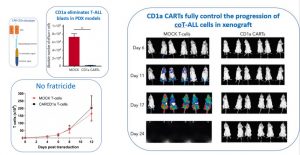 OneChain Immunotherapeutics (OCI) is a spin-off company from The Josep Carreras Leukaemia Research Institute. The aim of OCI is to develop new immuno-oncological therapeutic tools with various preclinical candidates, based on CAR–T technology for different tumours, such as cortical T-cell acute lymphoblastic leukemia (coT-ALL), a rare subtype of leukaemia that mainly affects children, and which has a poor prognosis.
OneChain Immunotherapeutics (OCI) is a spin-off company from The Josep Carreras Leukaemia Research Institute. The aim of OCI is to develop new immuno-oncological therapeutic tools with various preclinical candidates, based on CAR–T technology for different tumours, such as cortical T-cell acute lymphoblastic leukemia (coT-ALL), a rare subtype of leukaemia that mainly affects children, and which has a poor prognosis.
The spin-off was funded initially through a round of seed capital, amounting to €3,050,000, provided by Invivo Ventures, the Ministry of Industry, through CDTI-Innvierte, and the Josep Carreras Foundation, and it clearly makes the case for bringing the research carried out by Dr. Pablo Menéndez’s group closer to patients. Dr. Mendez is an ICREA research professor and the scientific director at the Josep Carreras Leukaemia Research Institute’s Hospital Clínic-UB Campus.
Dr. Menéndez’s group was the first in the world to develop and validate a CD1a specific CAR-T for coT-ALL. The study, published in the journal Blood, has so far been conducted with animal models using both cell lines and primary blasts derived from patients with coT-ALL. Preliminary results show that these CAR-T cells persist in vivo over the long term and retain their anti-leukaemia activity.
The creation of this spin-off marks a further step towards developing adoptive cell immunotherapy, such as CAR–T cell therapy.
Dr. Menéndez, founder of OCI and world renowned for his work in the field of childhood leukaemia, directs the Josep Carreras Institute’s stem cell biology, leukaemia development and immunotherapy group. More than 180 of his studies have been published by the world’s most prestigious scientific journals and, outstanding in his wide-ranging professional career is having been awarded the triennial ED Thomas Postdoctoral Fellowship grant, awarded by the Josep Carreras Foundation in 2006, as well as three grants awarded by the European Research Council (ERC), the most important scientific funding organisation in Europe.
Pulmobiotics SL
Supported by CRG and ICREA
Entrepreneur: ICREA Research Professor Dr. Luis Serrano and Dr. Maria Lluc (former CRG researcher).
Born in March 2020
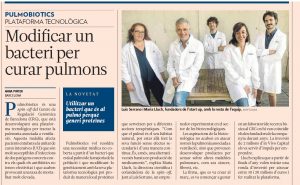 More than 1 billion persons suffer from chronic respiratory conditions worldwide, including 235 million people suffering from asthma and more than 200 million people enduring chronic obstructive pulmonary disease (COPD) which is moderate to severe in 65 million. 8.7 million people develop tuberculosis annually and more than 50 million people struggle with occupational lung diseases. Respiratory diseases are also among the leading causes of death worldwide, with 3.5 million deaths being attributed to lower respiratory diseases, 3.3 million to COPD and 1.4 million to tracheal, bronchial or lung cancer.
More than 1 billion persons suffer from chronic respiratory conditions worldwide, including 235 million people suffering from asthma and more than 200 million people enduring chronic obstructive pulmonary disease (COPD) which is moderate to severe in 65 million. 8.7 million people develop tuberculosis annually and more than 50 million people struggle with occupational lung diseases. Respiratory diseases are also among the leading causes of death worldwide, with 3.5 million deaths being attributed to lower respiratory diseases, 3.3 million to COPD and 1.4 million to tracheal, bronchial or lung cancer.
Building on over 10 years of research funded with over 14m € by Spanish and EU grant agencies (details here), we have developed a proprietary microbial engineering and synthetic biology toolbox that underpins a novel live biotherapeutics platform. Pulmobiotics will use its technology to discover and develop novel treatments and vaccines for respiratory diseases, which are among the most common causes of severe illness and death worldwide.
QURV Technologies SL
Supported by ICFO and ICREA
Entrepreneur: ICREA Research Professors Gerasimos Konstantatos and Frank Koppens
Born in July 2020
Qurv develops wide-spectrum image sensor technologies and integrated solutions to enable next-gen computer vision applications, addressing the expanding needs of an autonomous and intelligent new world.
In the past, vision technologies were developed by capturing pictures from the type of information that can be detected by the human eye- ‘pretty’ pictures. With the emergence of powerful data science techniques, traditional imaging is shifting towards advanced sensing that unlocks new unprecedented capabilities destined to impact our society.
Qurv’s technology leverages current CMOS scalable manufacturing and advanced materials to unlock new levels of performance, reliability and function in XR devices, service robots and automotive.
SixSenso Technologies SL
Supported by ICFO and ICREA
Entrepreneur: ICREA Research Professor Valerio Pruneri
Born in October 2020
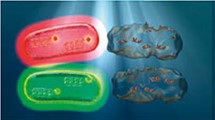 SixSenso Tech is a spin-off from ICFO- The Institute of Photonic Sciences which is based on research performed by the Optoelectronics group led by ICREA Prof. Valerio Pruneri.
SixSenso Tech is a spin-off from ICFO- The Institute of Photonic Sciences which is based on research performed by the Optoelectronics group led by ICREA Prof. Valerio Pruneri.
SixSenso engineers are working towards the creation of high impact sensing technology platforms. These solutions are designed to be extremely accurate, portable, cost-effective, and easily integrable within a process stream for real-time measurements.
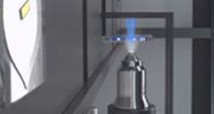
The project aims to address very relevant sensing challenges in various industries in the water sector.
Our main objective is to develop commercially viable solutions to support your specific sensing challenge.
Treellum Technologies SL
Supported by the Institut Català d’Investigació Química (ICIQ) and ICREA
Entrepreneur: ICREA Research Professors Julio Lloret, Ruben Martin and Paolo Melchiorre
Born in July 2020
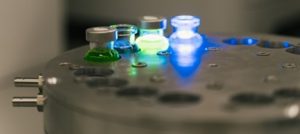 At TREELLUM TECHNOLOGIES SL we create advanced technological tools for scientific research. Our mission is to provide the research community with reliable photoreactors to ensure reproducible experiments.
At TREELLUM TECHNOLOGIES SL we create advanced technological tools for scientific research. Our mission is to provide the research community with reliable photoreactors to ensure reproducible experiments.
Nowadays, novel synthetic processes fulfilling green chemistry approaches and efficiency are highly required. The field of photocatalysis has attracted increasing interest among the scientific community and the chemical industry due to its low cost and attractive efficiency compared with standard approaches. More importantly, photocatalysis allows new synthetic pathways and molecules not possible through other methodologies. However, the lack of reproducibility and scalability of photochemical processes limits the application of these powerful reactivity procedures.
Currently available commercial photoreactors are limited and not adapted to the different emerging fields of chemical research and industry. For instance, the current commercial batch photoreactors do not control the light intensity and temperature, resulting in poor experiment reproducibility. This is even more problematic in reaction scale-up processes, which slows down the synthetic methods’ innovation and applicability. The poor control over the reaction parameters is also a significant difficulty in the transferability to industry, in which tight control about the composition of synthesized products is mandatory. Thus, there is a need for photoreactors offering exquisite control of reaction parameters, such as light intensity and temperature, to ensure reproducibility, and there is no commercial solution so far.
Treellum Technologies applies patented technology to offer first-class photoreactors that will boost the spread of photochemistry in academia and industry. Treellum Technologies’ first photoreactor consists of 16 reaction-vials distributed in four independent groups. Its circular design provides a constant magnetic stir to the temperature-controlled reaction vials (with a -20 to 80 ºC range). Each vial is irradiated by an independent wavelength customizable LEDs set, allowing to modify the intensity of light for each experiment. These features give chemists a versatile tool that finally offers the reproducibility needed for photo-chemical experiments to do excellent science. With Treellum Technologies research can span the range of scenarios to obtain detailed information: from running kinetic or mechanistic studies of reactions to molecule screening for drug discovery or lead generation.
The target sector of photoreactors involves the global photocatalyst market, which is forecasted to grow at a rate of 11.2% from USD 2.32 billion in 2019 to USD 5.23 billion in 2027. Nowadays, Treellum Technologies main target national, Europe (particularly UK and Germany) and USA markets. But, we are also evaluating the Asian market, in particular China and Japan.
Treellum Technologies aims to develop, manufacture and sell cutting-edge technological instruments and tools for research while considering the research community needs for precise instruments, expanding our current product portfolio.
Further information:
[1] Lloret-Fillol et. al. (2017) patent WO2018220008A1 (2020) EU patent EP3612300
[2] Lloret-Fillol et. al. (2020) USA patent US16/618,349
[3] www.treellumtechnologies.com
[4] A. Call, C. Casadevall, F. Acuña-Parés, A. Casitas, J. Lloret-Fillol Dual cobalt–copper light-driven catalytic reduction of aldehydes and aromatic ketones in aqueous media Chem. Sci. 2017, 8, 4739-4749
[5] N. Alandini, L. Buzzetti, G. Favi, T. Schulte, L. Candish, K. Collins, P. Melchiorre, Amide Synthesis by Nickel/Photoredox-Catalyzed Direct Carbamoylation of (Hetero)Aryl Bromides Angew. Chem. Int. Ed. 2020, 59, 5248–5253
[6] Cong, F.; Lyv, X. Y.; Day, C. S.; Martin, R. Dual catalytic strategy for forging sp2-sp3 and sp3-sp3 architectures via beta-scission of aliphatic alcohol derivatives
J. Am. Chem. Soc. 2020, 142, 20594
